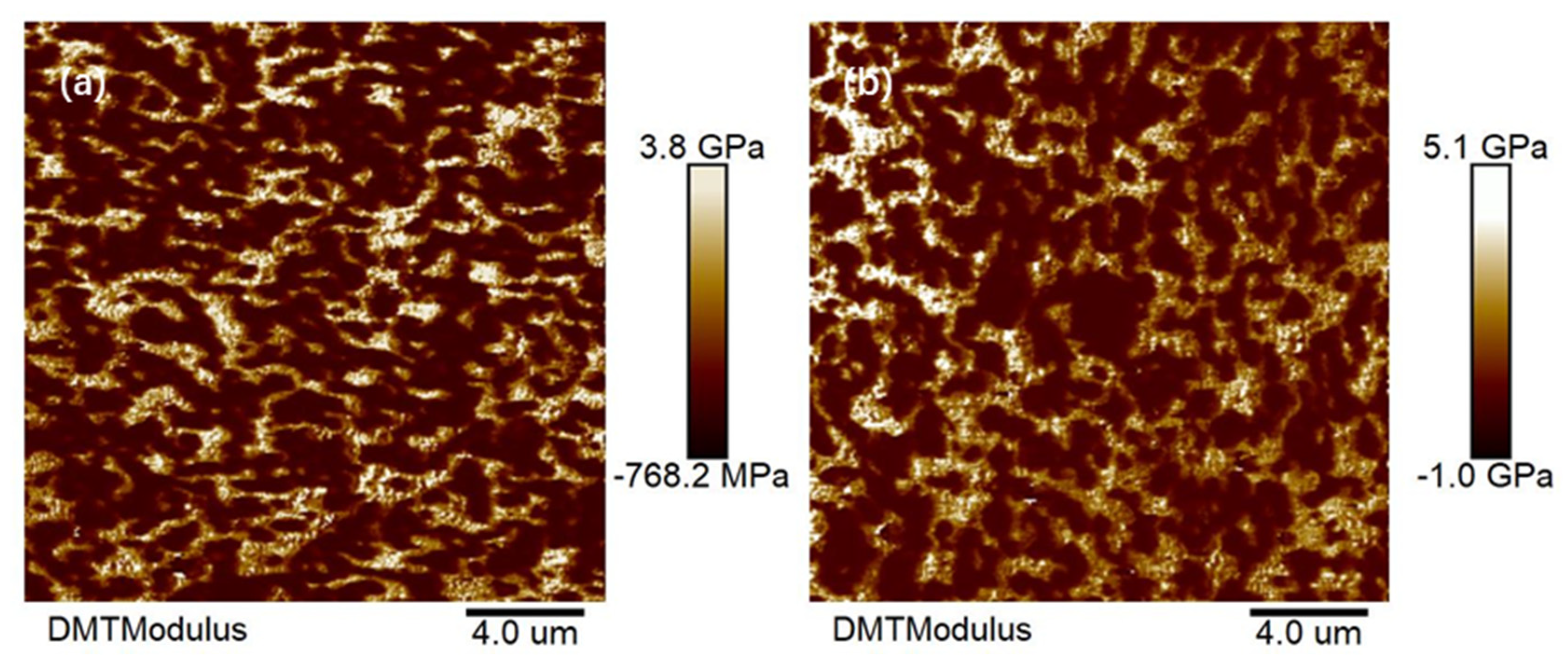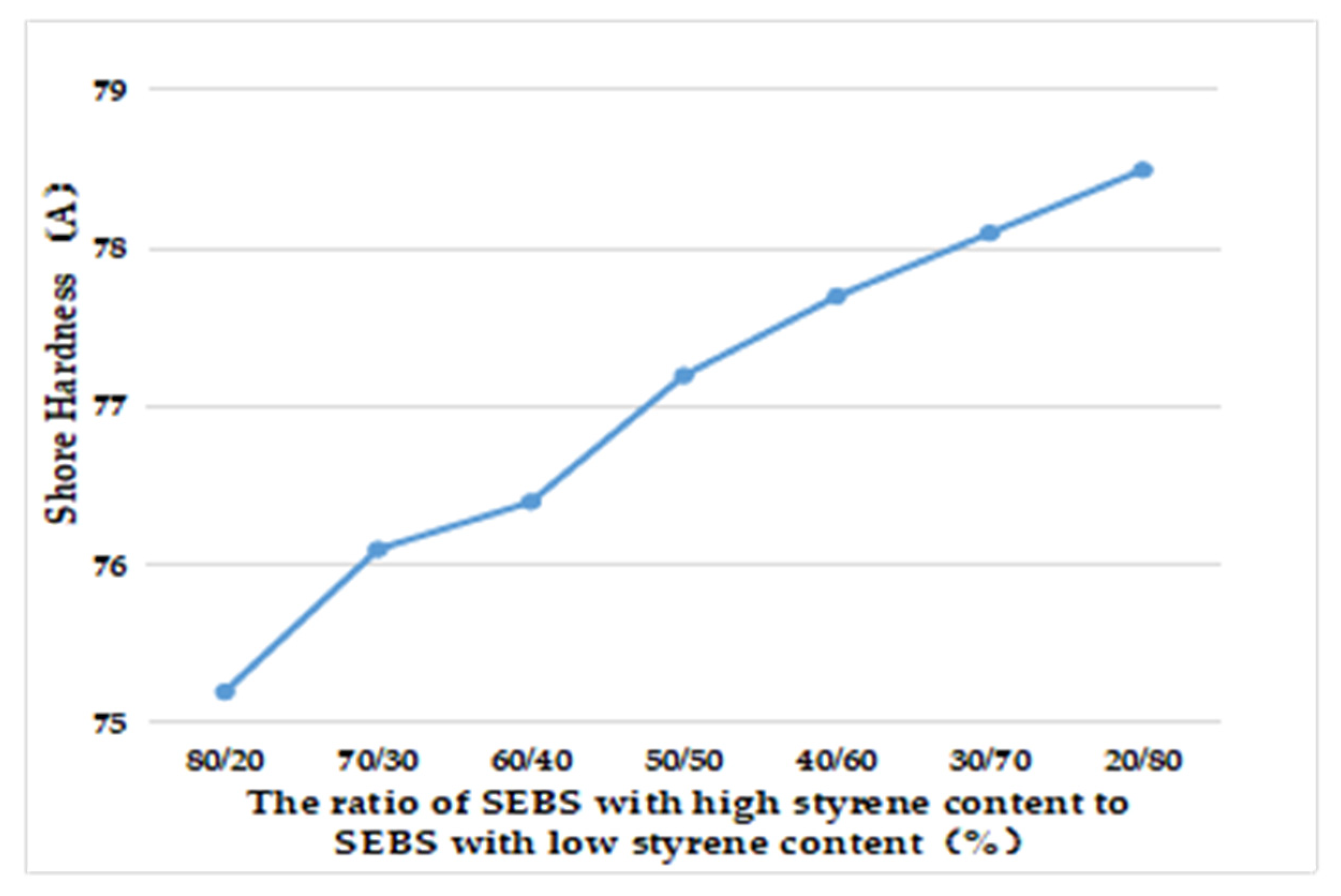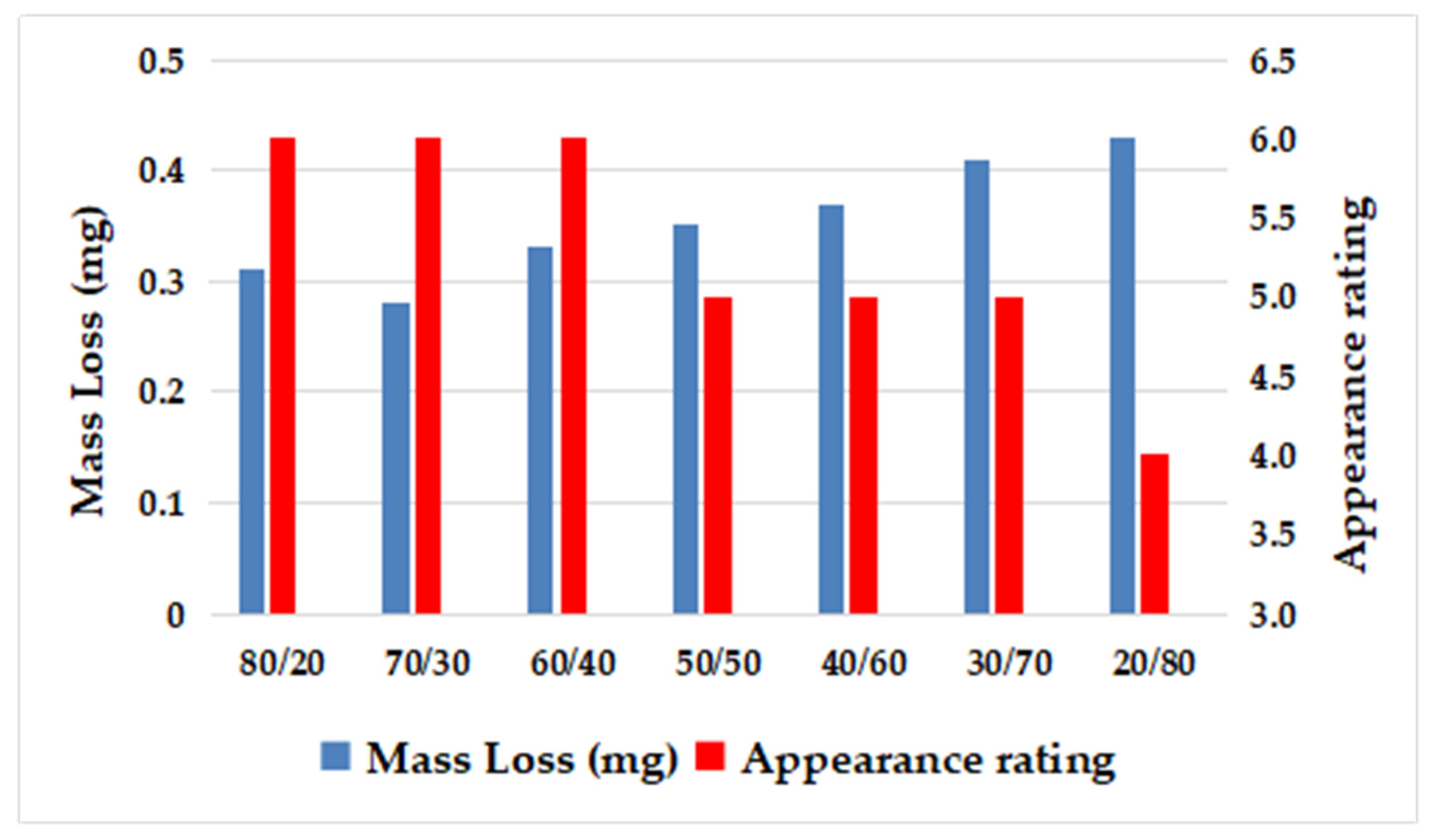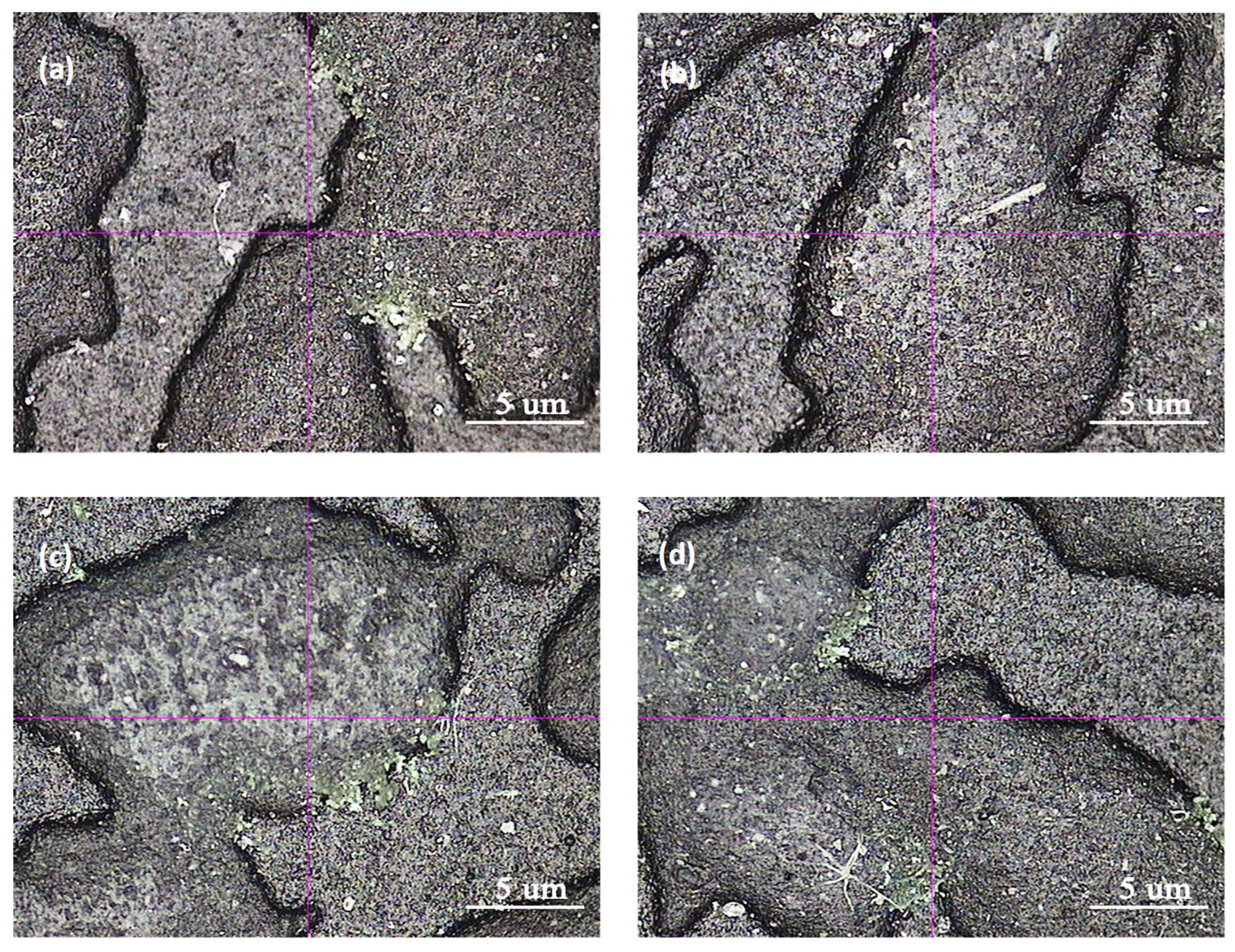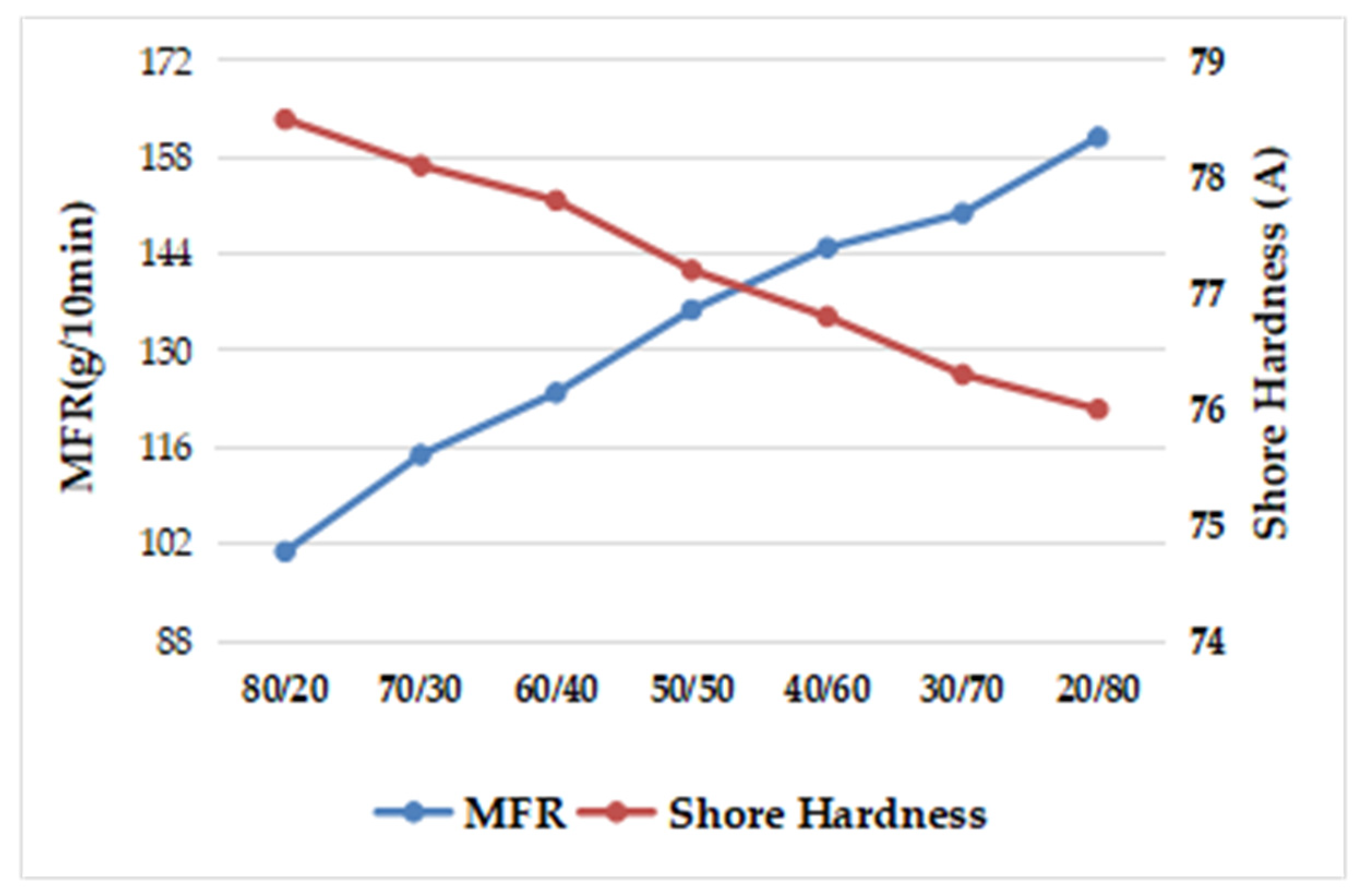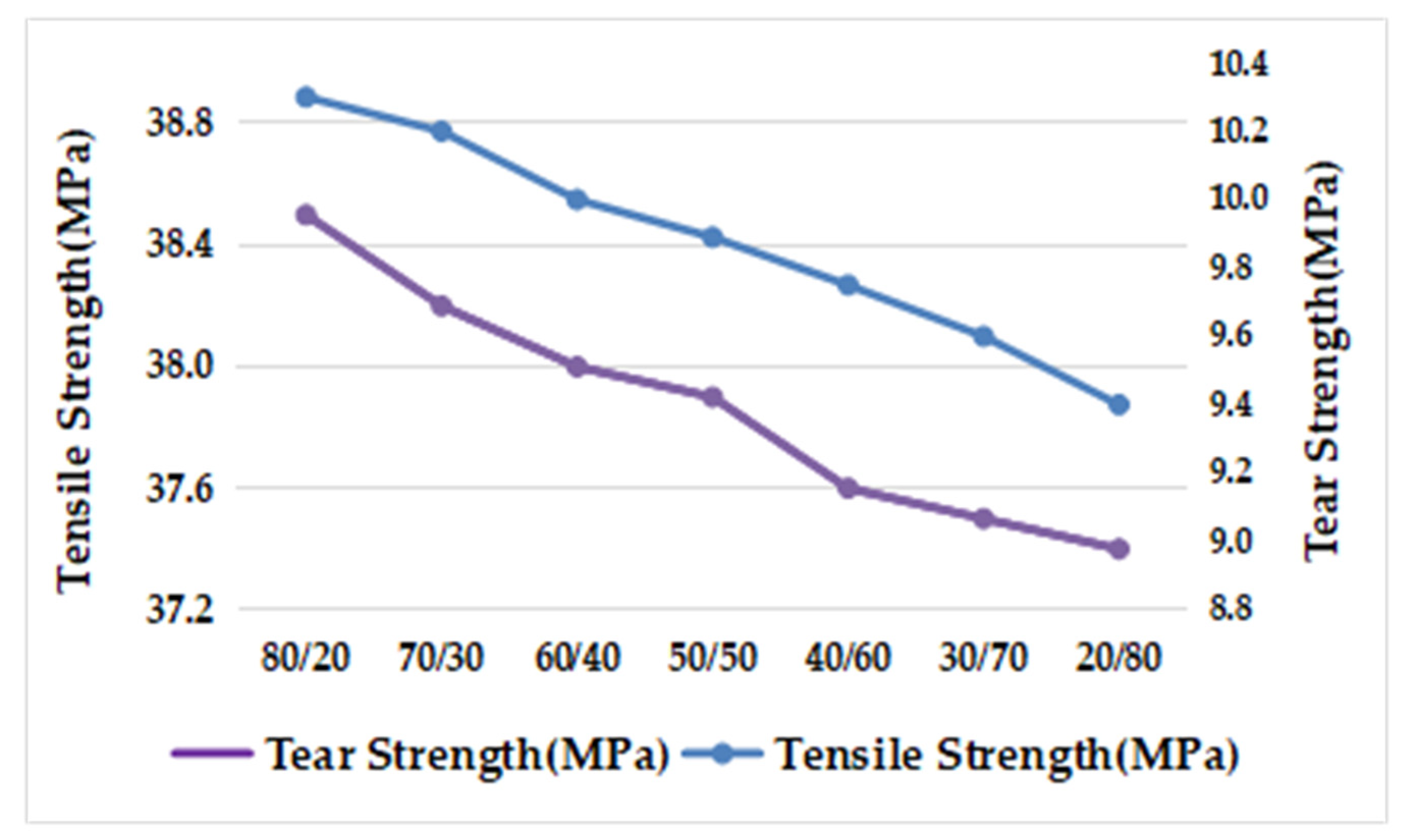3.1.2. Orthogonal Test and Performance Evaluation
In the design of the orthogonal experiment (DOE), the values of KI, KII, KIII, and KIV value were, respectively, calculated by the sum of all experiment results in level 1, 2, 3, and 4 of a factor. KAverage value was calculated by the average of KI, KII, KIII, and KIV of a factor. The R-value, which is used to characterize the degree of influence of a factor, was calculated by the difference between the maximum minus the minimum in KI, KII, KIII, and KIV divided by K. Higher R value of DOE result means greater influence degree.
We carried out data analysis and present the results in
Table 3, and we calculated the K
Average value and R value of hardness and each factor. The results are shown in
Table 4.
According to
Table 4, with the change of factor A, the hardness changed most obviously, which indicates the factor A (the ratio of SEBS/PP) had the greatest influence on the hardness of TPE-S (RA = 16.3). While the proportion of PP increased, the hardness increased significantly. The effect of the oil content added to SEBS on the TPE-S hardness was far less significant compared to the proportion of PP. The hardness of TPE-S decreased linearly with the increase in oil ratio filled in SEBS when the ratio of paraffin oil/SEBS was below 100/100. However, when the ratio exceeded 100/100, the influence of oil content on the hardness of TPE-S was reduced. PB-1 had a lower hardness than PP, and when PP was replaced by PB-1 in a certain proportion, the hardness of TPE-S decreased. It can be seen from
Figure 1 that, in the formula, PP/SEBS ratio exhibited the greatest influence on the hardness of final TPE-S. When the ratio of paraffin oil/SEBS was within 100/100, the oil content filled in SEBS had a greater effect on hardness than the ratio of PB-1-replaced PP. When the ratio of paraffin oil/SEBS was higher than 100/100, the effect of oil content filled in SEBS on hardness was basically similar to the ratio of PB-1 replaced PP on hardness.
According to
Table 3, the influence of each factor on the MFR was calculated by K
Average value and R value, and the results are shown in
Table 5.
According to
Table 5, the factor A (RA = 44.15), which was the ratio of SEBS/PP, significantly impacted MFR. It was speculated that this could be due to the use of ultra-high flow grade PP in the formulation, which had an MFR of over 1000 g/10 min—around 10 times higher than the final TPE, which had an MFR between 70 and 150 g/10 min. Therefore, increasing the amount of PP significantly improved the MFR of TPE. Furthermore, the ratio of paraffin oil filled in SEBS also had a substantial impact on the fluidity of the final TPE. Its effect was only surpassed by the addition ratio of ultra-high flow grade PP. As the oil content filled in SEBS increased, the MFR of TPE improved significantly. However, the fluidity of PB was low, and so, when the amount added to the system was less than 10%, adding a small amount of PB had little impact on the system. PB’s MFR was much lower than that of PP used in the formula, and its influence became more obvious when more than 10% of PP was replaced with PB. A higher proportion of ultra-high flow rate replace PB resulted in a decrease in the MFR of prepared TPE. The mechanical performance data of the material was analyzed, and the data are shown in
Table 6,
Table 7 and
Table 8.
According to
Table 6,
Table 7 and
Table 8 factor A had a greater influence on mechanical performance. As the PP content in SEBS/PP increased, the prepared TPE’s tensile strength and stress at 100% strain increased, while the elongation at break decreased slightly. In this material, the plastic phase PP provided rigidity and strength primarily. As the PP content increased, the tensile strength and the stress at 100% strain increased accordingly. However, the elongation at break decreased with an increase in PP content. Increasing the filling oil content was conducive to the disentanglement of SEBS molecular chains, conducive to the stretching of molecular chains, and the flexibility of molecular chains was improved, but the intermolecular force was also weakened, the tensile strength and fixed elongation were slightly reduced, and the elongation was slightly increased but not obvious. However, these changes were not significant. The addition of PB to the mixture led to poor compatibility with PP, resulting in decreased tear strength and elongation at break.
Table 9 demonstrates that tear strength was significantly influenced by Factor A, which refers to the SEBS/PP ratio. As the PP ratio increased, tear strength visibly improved. On the other hand, when oil content was added to SEBS, the mobility of SEBS molecular segment in the material increased, resulting in decreased compliance and lower tear strength.
According to
Table 10, factor A (the ratio of SEBS/PP) had the greatest influence on friction and wear of final TPE. With an increase in PP content in the formula, the hardness and rigidity of the prepared TPE increased, resulting in improved wear resistance.
Moreover, an increase in PB-1 content slightly improved abrasion resistance, possibly due to PB-1’s inherent characteristic of good abrasion resistance. Additionally, the molecular chain of PB-1 contained butene units, which enabled better SEBS compatibility with PB-1 than with PP, thereby contributing to the abrasion resistance of the prepared TPE. As a result, the abrasion resistance of the prepared TPE improved with increased PB-1 content.
However, increasing the oil content filled in SEBS led to an increase in the surface stickiness degree of the prepared TPE, resulting in increased adhesive wear, leading to a decrease in overall wear resistance.

